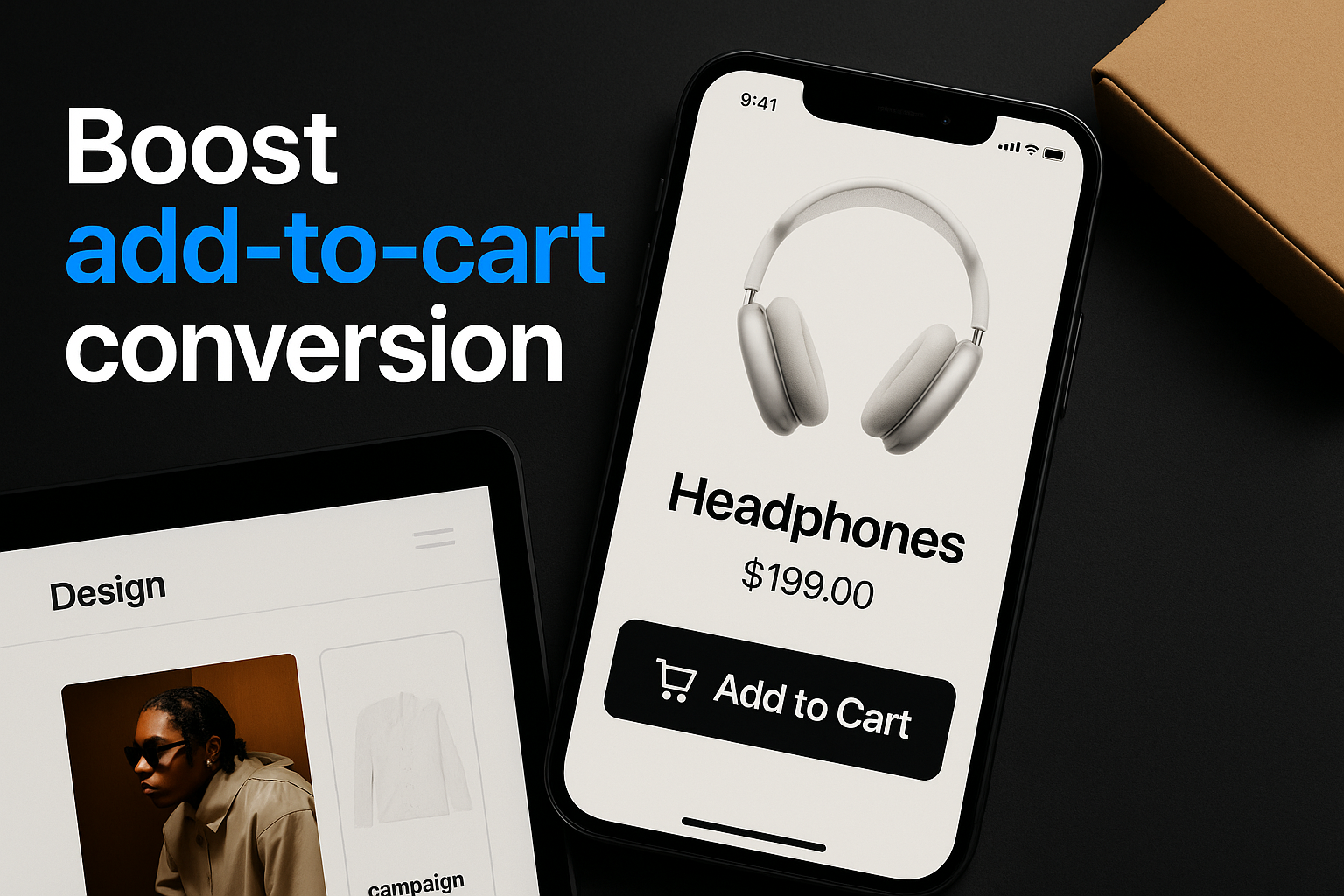8 Proven Strategies to Increase Add-to-Cart Conversion Rates
One of the most critical metrics for e-commerce success is your add-to-cart conversion rate. Most e-commerce visitors browse without adding products to their cart, and even fewer complete the checkout process. Improving this crucial first step in the purchase funnel can dramatically impact your bottom line.

Understanding the Add-to-Cart Rate
Before diving into optimization strategies, let's clarify what we're measuring:
Add-to-cart rate is the percentage of visitors who place at least one item in their shopping cart during a session. It's calculated as:
Add-to-cart rate = (Sessions with items added to cart / Total sessions) × 100
The global average add-to-cart rate varies significantly by industry, product type, and market.
Why focus on this metric? Research shows that a substantial portion of shoppers who add items to their cart eventually complete their purchase. By increasing your add-to-cart rate, you're expanding the top of your conversion funnel and creating more opportunities for sales.
Strategy 1: Prioritize Mobile Experience with a Dedicated App
Mobile commerce now accounts for the majority of e-commerce traffic, with conversion rates often lagging behind desktop. A dedicated mobile app can bridge this gap:
- Mobile apps convert at higher rates than mobile websites
- Apps deliver higher average order values
- Push notifications can bring customers back to abandoned carts
A well-designed mobile app addresses common friction points in the mobile shopping experience that prevent add-to-cart actions:
- Faster loading times (many mobile users abandon slow-loading sites)
- Streamlined product browsing
- Simplified cart management
- Persistent login and saved payment information
Strategy 2: Optimize Your Add-to-Cart Button
The design of your add-to-cart button may seem like a minor detail, but it can significantly impact conversion rates:
- Visibility: Use contrasting colors that stand out from your site's color scheme
- Size: Make buttons large enough to tap easily on mobile devices
- Position: Place buttons where users expect to find them (usually below product information)
- Wording: Test different phrases like "Add to Cart," "Add to Bag," or "Buy Now"
- Sticky buttons: Consider fixed-position buttons that remain visible as users scroll on mobile
A/B testing shows that optimizing button design alone can improve add-to-cart rates substantially.
Strategy 3: Enhance Product Pages with Crucial Elements
Product pages that convert effectively share several common elements:
- High-quality images: Include multiple angles and zoom capability
- Clear pricing: Display total costs upfront, including any variants
- Detailed descriptions: Focus on benefits, not just features
- Availability information: Show stock status to create urgency
- Size guides: Reduce uncertainty for apparel and footwear
- Shipping details: Display estimated delivery times prominently
Most consumers rate product content as extremely important when deciding to buy. Addressing common pre-purchase questions directly on the product page removes barriers to adding items to cart.
Strategy 4: Leverage FOMO and Urgency
Creating a sense of urgency can motivate hesitant shoppers to act. Effective tactics include:
- Limited-time offers: Countdown timers for sales or promotions
- Low stock indicators: "Only a few left in stock" messaging
- Recent purchase notifications: "Several people bought this recently"
- Limited-edition products: Highlighting exclusivity or time-limited availability
These psychological triggers tap into the fear of missing out (FOMO) that drives impulse purchases. Many consumers make reactive purchases because of FOMO, often within a short timeframe.
Strategy 5: Implement Upselling and Cross-Selling
Strategic product recommendations can increase both add-to-cart rates and average order value:
- Complementary products: "Frequently bought together" suggestions
- Bundle offers: Discounts for purchasing related items
- Upgraded options: Showcasing premium alternatives with enhanced features
Product recommendations drive a significant portion of e-commerce revenue for many businesses.
To maximize effectiveness:
- Ensure recommendations are genuinely relevant
- Present them before the add-to-cart action for cross-selling
- Show them after for upselling
- Limit options to avoid choice paralysis
Strategy 6: Recover Abandoned Carts
While preventing abandonment is ideal, recovery strategies are essential:
- Exit-intent popups: Trigger offers when users show signs of leaving
- Email reminders: Send a sequence of emails after abandonment
- Push notifications: For mobile app users, remind them of items left behind
- Retargeting ads: Show abandoned products across ad networks
Abandoned cart emails typically have high open rates and click-through rates, making them among the most effective marketing emails you can send.
Strategy 7: Offer Multiple Payment Options
Payment friction is a major barrier to conversion. Expand your payment options to include:
- Credit/debit cards
- Digital wallets (Apple Pay, Google Pay)
- Buy Now, Pay Later services
- PayPal and alternative payment methods
- Local payment preferences for international customers
Strategy 8: Build Trust with Social Proof
Consumer trust directly impacts willingness to add items to cart:
- Product reviews: Most shoppers read reviews before purchasing
- Star ratings: Display aggregate ratings prominently
- User-generated content: Photos and videos from actual customers
- Purchase counters: "Many customers have purchased" creates confidence
- Trust badges: Security certifications and guarantees
Implementing robust social proof elements can significantly increase add-to-cart rates, particularly for higher-priced items where perceived risk is greater.
Measuring Success and Continuous Optimization
Improving your add-to-cart rate requires ongoing testing and refinement:
- Establish a baseline: Track your current add-to-cart rate by device, product category, and traffic source
- Implement changes sequentially: Test one strategy at a time to measure impact
- Use A/B testing: Compare variations to determine which performs better
- Analyze the full funnel: Monitor how add-to-cart improvements affect checkout completion
- Segment your data: Different customer segments may respond differently to optimization efforts
Conclusion
Increasing your add-to-cart conversion rate is one of the most effective ways to boost e-commerce performance without increasing traffic acquisition costs. By focusing on mobile optimization, product page enhancements, psychological triggers, and removing friction points, you can convert more browsers into potential buyers.
For mobile commerce businesses, a dedicated app with native mobile features often provides the most significant opportunity for improvement, offering substantially higher conversion rates than mobile websites.
Ready to optimize your mobile commerce experience? Learn more about how Taptool can help you implement these strategies and boost your add-to-cart conversion rates.
